Artist-Led Tour of "ENCORE" Photo Exhibit w/ Mark S. Kornbluth
Join photographer Mark S. Kornbluth for a visual exploration of NYC's Broadway theaters at Cavalier Galleries!


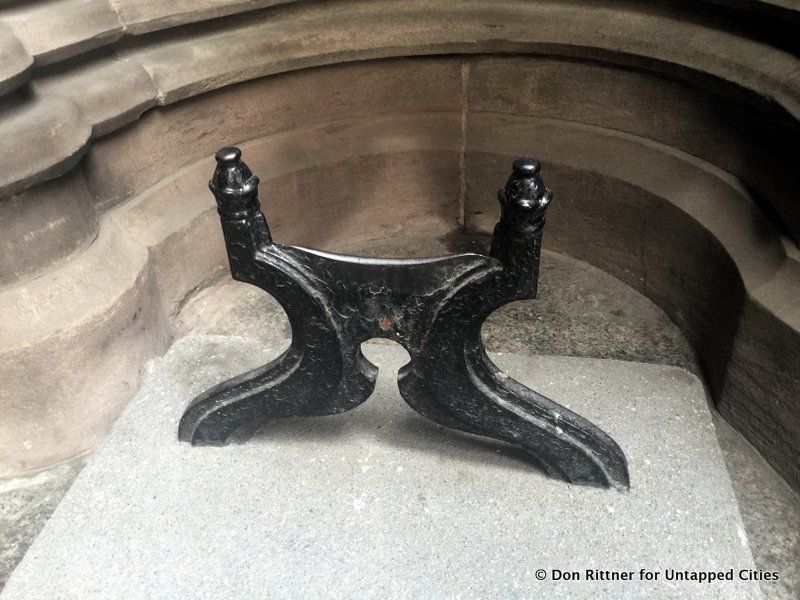
Every day millions of New Yorkers walk along the miles of paved sidewalks, likely oblivious to the fact that walking city streets didn’t become a passtime until the mid-18th century in Europe when footpaths, tree lined walkways, and public parks made it fashionable for the upper class.
These footpaths along streets in London, Paris, Brussels and others were lined with wrought iron scrapers so people could wipe off excrement (think horse as the primary mover of the period) and mud. You certainly didn’t want to bring that into the house. There are still hundreds of boot scrapers left on the streets of New York City, making it a fun game to locate the different styles.
Boot scrapers were even included by architects in their published plans for farms, cottages, residential urban dwellings, and even churches. There are long descriptions of where to place them in many architect’s catalogs. Entire residential blocks were built with identical boot scrapers built into the iron stairwells leading up to each door, or next to them.

A description of boot scrapers in the 1842, An Encyclopædia of Cottage, Farm, and Villa Architecture and Furniture, By John Claudius Loudon.
By 1840 boot scrapers were ordered off Belgium streets citing them as obstructions since it was easy to trip over. Instead they began getting attached to the side of steps, or iron railings, and before long there were hundreds of different types of boot scrapers, or as the French called them “decrottoir” meaning, well, remove excrement! They also went by the names shoe scrapers or simply scrapers. During the 19th century many patents were issued for new styles, many with elaborate ways to remove filth.
Boot scrapers became popular in colonial America as well in the 18th century, first simply as a thin hand wrought blade attached to two anchors and placed next to a house. By Victorian times cast iron allowed the production of many fashionable styles and they were even built into the stoop railings obvious to the user while others could be located discreetly. During the turn of the 20th century you could easily buy them from your Sears and Roebuck catalog.

You could buy foot scrapers from the 1902 Sears Catalog for as little as four cents a piece. Source: 1902 Sears catalog.
Boot scrapers are still made today and patented well into the 20th century and there is even a Flickr page devoted to them.

Patent for new improved boot scraper by Morris A. Collins from Gainesville, Texas in 1883. Many styles were patented during the 19th century and continue today. Image from U.S. Patent.
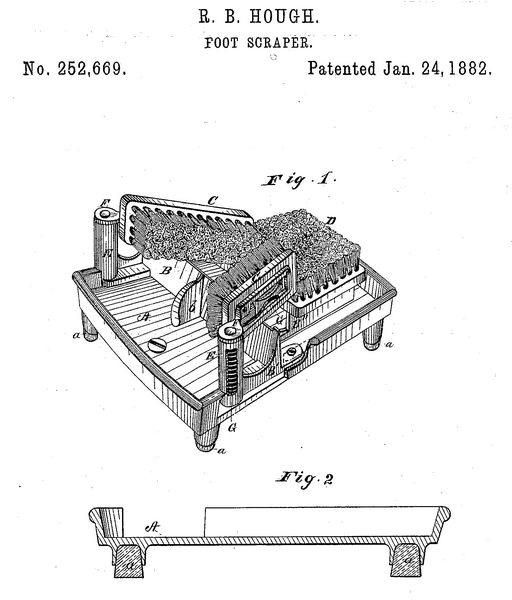
This foot scraper was invented by Robert Hough of Erie, Pennsylvania in 1882 and had an elaborate system of brushes to clean your boots. Source: U.S. Patent Office.
In New York City, the easiest place to look are in the older parts of the city such as Greenwich Village. You will find boot scrapers commonly in buildings from the Federal Period (1790s) through the Victorian (1890s), and well into the 20th century. A good example of a block of houses with identical boot scrapers is at St. Luke’s Place (numbers 3 to 17).
A good number of famous people likely used them here: Poet Marianne Moore (1887-1912) probably scraped her shoes at Number 14. Max Eastman, editor of the revolutionary journal The Masses probably used his at number 11 St. Luke’s. Artist Paul Cadmus lived at Number 5. Theodore Dreiser, author of An American Tragedy probably used his at Number 16. Timothy Leary may have tripped over his at Number 11 Leroy Street. Close by, Mayor Jimmy Walker had one at Number 6 Leroy Street. Even Audrey Hepburn may have used hers at 4 Leroy Street when filming Wait Until Dark in 1967.
Cast iron boot scrapers are on both sides of the entrance to Trinity Church at 75 Broadway in Manhattan. The church was built in 1846 so this cast iron scraper probably replaced an earlier hand wrought one:

St. Paul’s Chapel, part of Trinity Church and built in 1766, is located on Broadway and Fulton Street just a few blocks away. It has a more elaborate cast and wrought iron boot scraper:
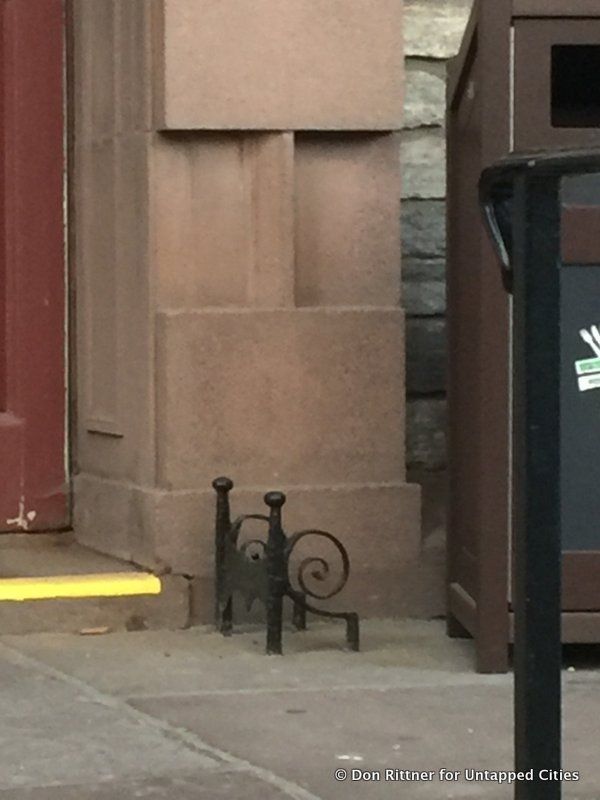
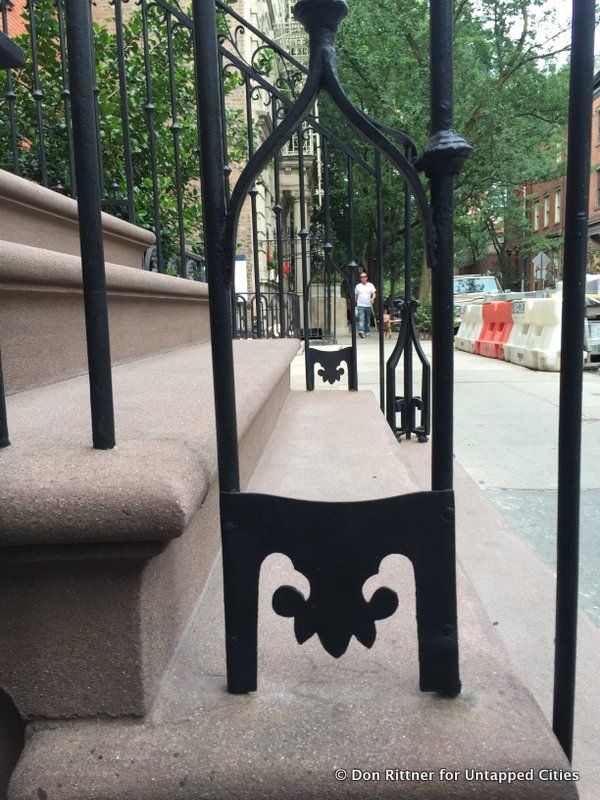
Boot scrapers came in all sizes and shapes as seen here with the little doggie scraper at 267 West 11th Street:

Detached from the railing and anchored right into the stoop, this single blade cut iron scraper was the basic get-the-job-done style and is located at 152 Waverly Place:

This simple blade scraper at 15 Christopher Street has a hook in the bottom to get rid of that hard to get dirt:
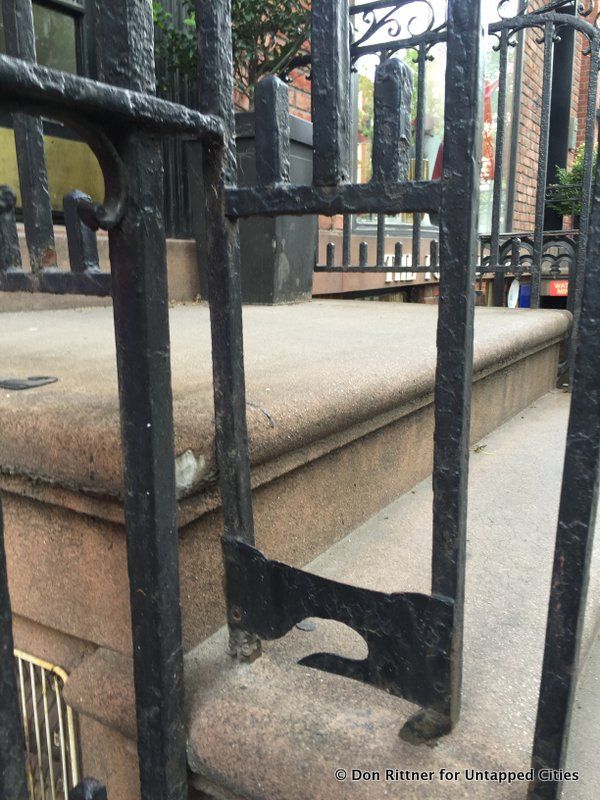
They didn’t get any fancier that this one at 150 Waverly Place. All cast iron construction and built right into the railing. The scraper bar duplicates the Victorian design on the first rail:

See how many boot scrapers you can find and report back!
Next, check out our Cities 101 column for more about how NYC works like how the NYC subway gets cleaned.
Subscribe to our newsletter